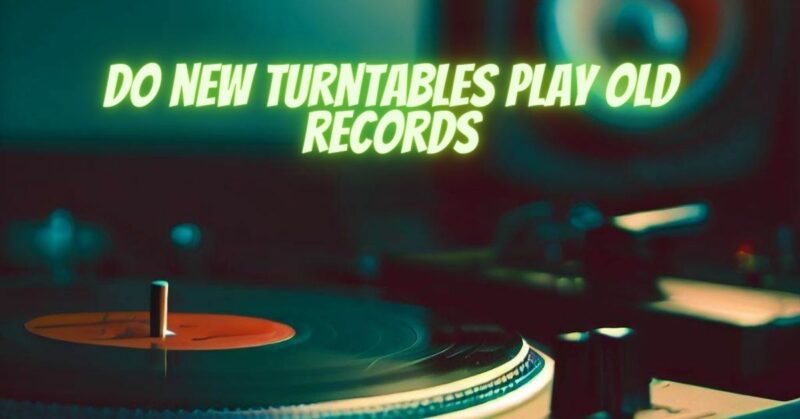In the timeless pursuit of audio nostalgia, vinyl records stand as artifacts that bridge generations. As the vinyl resurgence continues, enthusiasts often wonder about the compatibility of new turntables with the cherished records of yesteryear. This article explores the considerations and factors that influence the ability of new turntables to play old records, delving into the nuances of technology, tracking mechanisms, and the preservation of vintage vinyl.
- Universal Groove Dimensions: One of the fundamental aspects of vinyl records is the standardized groove dimensions. The width and depth of record grooves have remained consistent over the decades, allowing new turntables to trace the paths laid down by vintage styluses. This universality ensures that new turntables can physically track and play old records.
- Stylus Compatibility: The stylus, or needle, is the component that makes direct contact with the grooves of a vinyl record. New turntables often come with styluses that are compatible with the standard dimensions of vinyl grooves, making them capable of playing old records without any issues. However, stylus condition and quality are important considerations for optimal playback.
- Adjustable Tonearms: Many modern turntables feature adjustable tonearms that allow users to fine-tune the tracking force and anti-skate settings. This adjustability is advantageous when playing older records with potential wear and variations in groove depth. Ensuring that the tonearm is correctly set helps maintain the delicate balance required for accurate playback.
- Anti-Skate Mechanisms: The anti-skate mechanism in turntables is designed to counteract lateral forces exerted on the stylus, preventing it from being pulled towards the center or outer edge of the record. This feature aids in preserving the fidelity of old records, especially those with fine, delicate grooves.
- Tracking Force Considerations: Older records may have been subjected to varying degrees of wear and handling over the years. Adjusting the tracking force, or the downward pressure of the stylus on the record, is crucial for preventing excessive wear on both the stylus and the grooves. Modern turntables with adjustable tracking force settings accommodate this need.
- Precautions for Fragile Records: Some vintage records may be more delicate due to age or manufacturing processes. In such cases, it’s advisable to handle them with care and consider using a high-quality stylus with a finer tip to minimize potential damage. Additionally, avoiding excessive tracking force can further protect fragile records.
- Vinyl Cleaning and Maintenance: To ensure optimal playback on new turntables, it is essential to keep both old and new records clean. Dust and debris can negatively impact playback quality and lead to premature stylus wear. Regular cleaning using a gentle brush or record cleaning solution contributes to a better overall listening experience.
- Listening Experience: The compatibility of new turntables with old records goes beyond mere functionality. The listening experience is a subjective journey that involves the synergy between equipment and the inherent charm of vintage recordings. When paired correctly, new turntables can breathe new life into old records, offering a delightful blend of nostalgia and contemporary fidelity.
The compatibility of new turntables with old records is a testament to the enduring universality of vinyl playback. With careful consideration of stylus quality, adjustable settings, and maintenance practices, enthusiasts can seamlessly integrate their cherished vintage records into the vinyl resurgence, creating a harmonious bridge between the past and present in the world of audio exploration.

